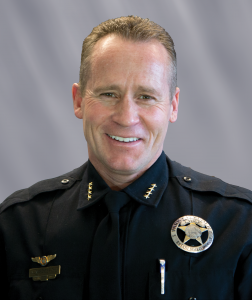
Park City Police Department, Utah
Hate crimes and hate incidents are heinous acts that demand immediate attention, response, and resolution whenever possible. What makes hate crimes so malicious is that their impact spreads far beyond the direct victims and their families.
These crimes have far-reaching effects on large segments of the communities in which they take place, spreading fear and toxicity throughout.
The FBI released 2022 U.S. hate crime statistics in October 2023, and it will come as little surprise to most people that those statistics show an increase in hate crime incidents over prior years. Race, religion, and sexual orientation remain the most common drivers for these hate-fueled acts, with incidents most frequently occurring at residences/homes, roads/highways, and in schools and colleges.
While these numbers show that the United States is facing a clear hate crimes problem, we know that this does not encompass the totality of hate crimes because these incidents are underreported by both the police and our communities. This lack of firm statistical data on the incidence and nature of these crimes is one of the greatest barriers to confronting and overcoming hate violence. We cannot be fully effective in the prevention and prosecution of hate crimes without more accurate and comprehensive data collection and reporting. We must collectively do better, and we can do better.
As you know, participation in the FBI’s national hate crime reporting program, which—like the rest of NIBRS (National Incident-Based Reporting System)—is voluntary. While participation has increased over the years, participation levels are still lacking, and we, as police leaders, need to make the reporting of hate crime data a priority within our agencies.
Hate crimes cause fear, and, if they are seen as not being taken seriously by the police, the criminal justice system, or our communities, they can cause distrust and resentment by the victims and other members of a community. That is why it is essential that community members report hate crime incidents, so we can break the cycle of hate and fear.
As a chief, I recognize that not one single factor has been more essential to preventing and reducing crime levels than collaboration between the police and the communities they support and serve. In order for us to be truly effective, officers and agencies must have the active assistance of and support from every facet of our communities. Thus, it is imperative that we work hard to establish relationships with trusted leaders of community-based organizations that are more likely to be able to go to and communicate with the most vulnerable community members who may not report crimes to the police.
Establishing and maintaining these crucial relationships in order to build a mutual understanding and level of trust with diverse communities requires time and an ongoing effort, but will ultimately help us work toward the prevention of hate crimes in our communities.
As officers, we have a duty to put ourselves in the victim’s shoes. If we see a religious hate symbol or hateful words graffitied on a school, church, or house in our community, we must ask ourselves, how would that make me feel? Even if we are not of the same faith, ethnic background, or sexual orientation, we must recognize how these acts could make segments of the community feel and then take immediate action to address these harmful incidents.
Like a disease, hate crimes spread and seep into the entire community.
Initial steps can be taken that can quickly bring comfort to the community. Reinforce the message that hate crimes will be investigated promptly and aggressively, thus enhancing the likelihood that the perpetrators will be apprehended and successfully prosecuted. In the case of graffiti, collect the evidence needed, take photos, write up the necessary reports, and so forth—and then quickly take the steps needed to have it removed. It sends a powerful message to your community if you and your officers are out there painting over hate symbols.
Like a disease, hate crimes spread and seep into the entire community. If a hate crime is not recognized for its hatred, the responsible parties and hate groups become emboldened and often feel like their sentiments are shared. It is essential that police leaders and elected officials condemn acts of bigotry every chance we can. We hold important roles in our communities, and we must use them to speak out against these hateful incidents and send a message that such acts will not be tolerated. We must all work together to put an end to hate crimes.d
Please cite as:
Wade Carpenter, “Combating Hate and Fear in Our Communities,” President’s Message, Police Chief 91, no. 8 (August 2024): 6–7.


